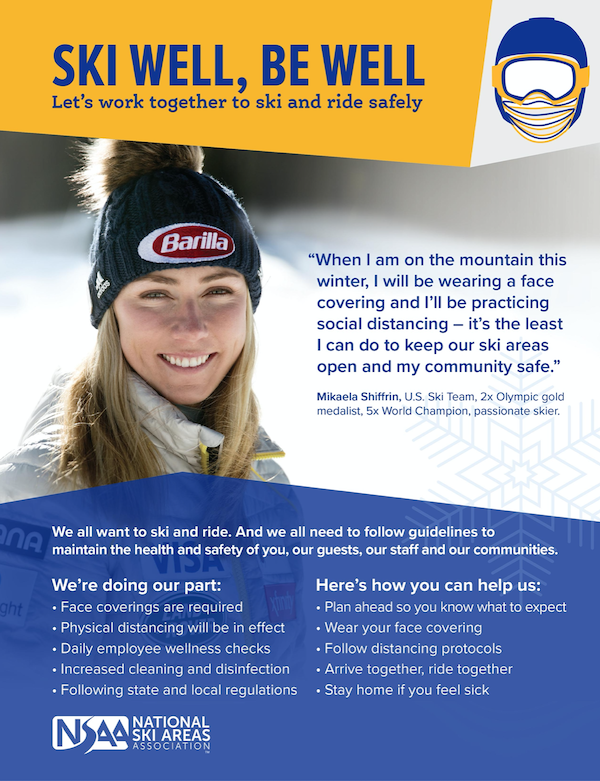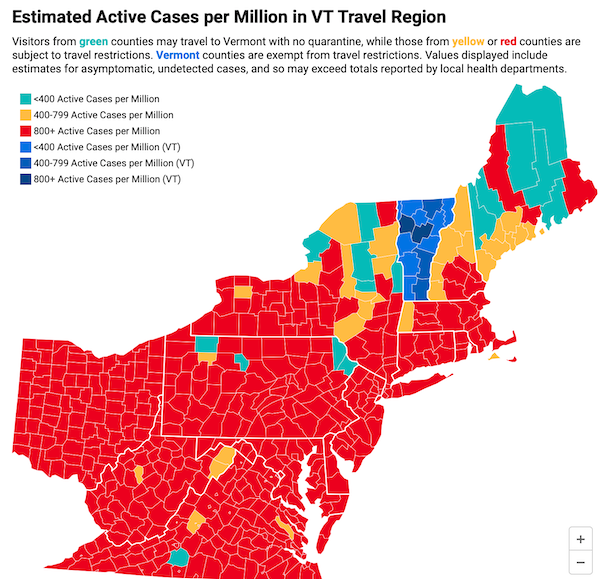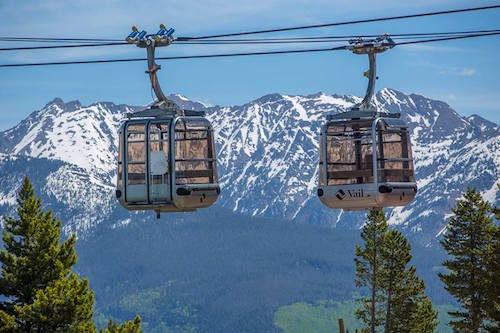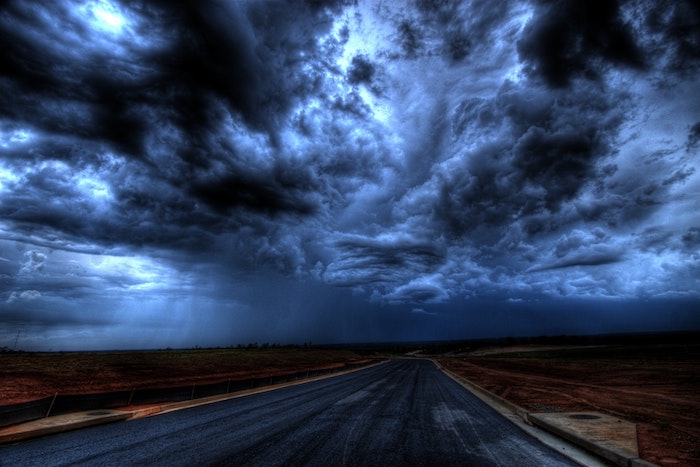If there’s one thing we know for sure about the coming season, it’s that travel isn’t going to be easy. Throwing your skis in the car or hopping on a plane for an impromptu trip just isn’t going to happen. Instead, any travel is going to require a lot of planning, preparation, and maneuvering to protect yourself and others from contracting the virus.
Pretty much everyone knows the virus-protecting basics: Wear a mask, stay at least 6 feet away from other people, and wash your hands. A lot. Also, don’t overlook the benefits of disinfecting wipes and hand sanitizer, and be sure to use them liberally. But there are other things you should also consider if you’re going to take a ski vacation this year:
Check your ski destination’s policies
Even though the National Ski Areas Association has adopted a slate of best practices for ski areas, it’s a good idea to check the COVID-19 policies for the ski area you’re visiting. As per the NSAA platform, masks and social distancing are going to be the norm, but there will be differences from one area to another. Some will require reservations, some won’t. Some will have their lodges open, others won’t. Will you be able to buy food? Do you have to buy your pass in advance? (The answer is probably.) And if the resort shuts down abruptly, can you get a refund? Know what to expect so you can prepare in advance.

Know the local travel restrictions
This is a moving target. Each state has its own mandates, and they seem to change from one week to the next. As I’m writing this (October 31), my home state, Vermont, is requiring a mandatory 2-week quarantine, or one week quarantine with a PCR test, for visitors from red or yellow counties (see the map below). But this could change if infection rates ramp up or a vaccine miraculously appears (truly, though, I’m not expecting anything until at least next spring). Visitors to Alaska must either show proof of a negative COVID test upon arrival or pay $250 for a test as soon as they land, and if they’re still in the state after seven days, they’ll need to be tested again. In Maine, visitors who’ve tested negative for COVID or who are visiting from six East Coast states aren’t required to quarantine at all. To find the rules in place for the destination you’re considering, be sure to check out the state’s official tourism website.

Vermont Travel Restriction Map, 10/30/20. For latest, visit https://accd.vermont.gov/covid-19/restart/cross-state-travel
Car travel has its benefits.
The good thing about car travel is that you can do a lot to minimize your contact with others. View it as a long corridor connecting Point A with Point B: Home and your destination. The trick is not to stop unless you have to — say, for gas or a bathroom break. So pack some food, load up the audiobooks, and keep moving.
Air travel requires caution.
I have very mixed feelings about traveling by air, and they don’t necessarily have to do with the plane, itself. Airplanes are actually better than you might think. According to a study recently released by Harvard, planes are now equipped with specialized onboard ventilation systems that filter out 99% of airborne viruses. The researchers say that this, when combined with masking, disinfection, and passenger self-screening, helps make planes safer than your average grocery store.
For me, even more worrisome than the planes are the other interactions that go along with air travel: Taking a shuttle from parking to the terminal, getting through TSA. waiting at the gate, getting coffee, using the restroom. Any one of these has the potential for infection.
SO — if you intend to travel by air, keep a few things in mind: A nonstop flight is much safer than one with layovers, because you have fewer chances of being exposed to the virus. Definitely wear a mask in the airport and on the plane (many airlines require them). And for even greater protection, use a face shield or goggles, since the virus can spread when you touch your eyes. Also, be sure to bring disinfecting wipes to wipe down any hard surfaces you may contact on the plane, such as seat belt hardware, arm rests, and tray tables. And the two biggies: Wash your hands as much as possible, and don’t touch your face.
Renting a car
Renting a car is a lot safer than taking a van or a shuttle, since it minimizes your contact with other people. That said, research shows that the coronavirus can linger on some surfaces for two to three days and even stay suspended in the air for up to an hour. So bring along some cleaning supplies and wipe down high-touch areas in your rental, like the steering wheel, control panel, and seat belt hardware. When you drive, crack a window or run the AC to increase ventilation. I know it’s already cold, but circulating the air is important.
Lodging
If you’re thinking about going the Airbnb route, you’ll have to do some investigating to make sure short-term rentals are even allowed. If they are, you’ll still have to follow the travel restrictions of the state you’re visiting, such as quarantining, if required. If you’re staying in a hotel or motel, find out as much as you can about their COVID cleaning policies. Do they leave a room empty for a day or so before it’s ready to occupy? What specific cleaning procedures do they use for the virus? No matter what your accommodations, you might want to do some cleaning of your own, once you check in. Wipe down high touch surfaces, including door knobs, remote controls, light switches, and anything you might touch in the bathroom. You may also want to check into your lodging’s cancellation policies. If the ski resort shuts down due to COVID, or if you get sick with the virus, would they issue a credit or a refund?
Apres and dining out
If your idea of apres ski fun is sidling up to a bar for a beer or two, you’d be better off forgoing it this year. A lot of bars are going to be closed, anyway, and even if they’re not, it’s not something I’d personally recommend. The risk of airborne transmission is just too great, the ventilation too poor, and mask compliance not always universal. For the same reason, I don’t think it’s very safe to eat in a restaurant, no matter how far apart the tables may be. If you can cook in your rental condo, do that, instead. And if you don’t want to cook, there’s always take out.
When you get home
Be a good citizen and protect others by quarantining when you home: two weeks if you don’t get a test, or 7 days followed by a PCR test. The only way we’re going to lick this thing, at least until a vaccine comes along, is to do whatever we can do slow it down. It’s the only way we’ll be able to keep on skiing. And we all want that.
Stay safe, stay healthy, everyone.



